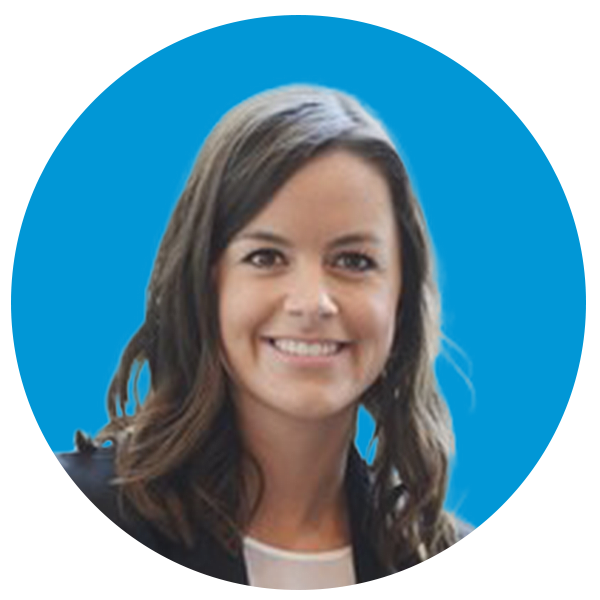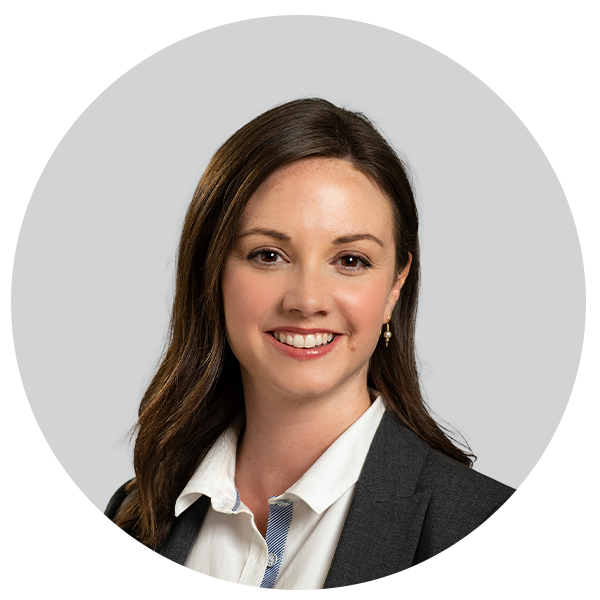
2021
Vision
to
Virtual
Mastering Telehealth Piece by Piece

Speakers

Rachel Kuhnly
Manager of Population Health, Operations
Allina Health
Rachel received her undergrad at University of Wisconsin – Eau Claire with a focus on long-term care. Rachel desired to enable improvement across the care continuum and pursued her Masters at the University of Minnesotaʼs MHA program. After graduation, she completed a year-long fellowship at Allina Health under Dr. Penny Wheeler. During her fellowship, the pandemic started and quickly worked with Julia Crist (among many others!) to stand up a Hospital at Home model for Allina Health. Now Rachel is the Manager of Population Health, Operations, where she continues to oversee the program development and operations.

Julia Crist
Vice President of Operations
Allina Health
Julia Crist is a leader in post-acute and value-based care models for seniors. In her current role as Vice President of Home and Community Services at Allina Health in Minneapolis Minnesota, Julia leads operations and strategy for several service lines, including; home health, hospice, community geriatric medicine, palliative care and durable medical equipment. She is passionate about driving change in healthcare to reduce cost, improve outcomes, and serve patients and families in accordance with their wishes. Julia holds a Bachelor of Science degree from University of Wisconsin-Madison, and Master of Healthcare Administration from the University of Minnesota.
Expanding Beyond Home Health: The Hospital at Home Care Model
Despite decades of research and proven outcomes, the Hospital at Home model of care was not widely used in the US. However, over the past year, as health systems and other care providers have faced a surge in hospitalizations while balancing limited resources, Hospital at Home programs have sprung up across the country.
This session reviews the key elements necessary to launching a Hospital at Home program, hearing directly from HRS partners at Allina Health who launched a Hospital at Home program in one month during the COVID-19 pandemic.
To conclude the session, HRS provided an overview of its current and future PatientDirect and PatientDirect+ services, which help reduce travel time for clinicians and staff, while ensuring patients receive the immediate support of RPM services when discharged home.
Other Sessions
Sorry, no results found.
Keynote: The Rise of Telehealth and Remote Patient Monitoring
Vision to Virtual’s keynote session, hosted on November 3, 2021, presented the key drivers impacting the direction of healthcare and health-technology heading into 2022: the COVID-19 pandemic, the growing role of consumerism, increasing health disparities, telehealth reimbursement expansion, and more.
Establishing a Vision and Setting Goals
To successfully launch or expand a telehealth program, providers must first define and set clear goals and program objectives. This session will review the importance of aligning program goals with individual responsibilities as well as the organization’s overarching mission. Also, it will outline how to evaluate your goals periodically and when to adjust your workflows to ensure continued program success.
Building a Team and Ensuring Buy-In
This session, hosted on day one of the Vision to Virtual conference, outlined the core roles and responsibilities of the telehealth team within an organization, highlighting case studies from HRS partners with telehealth teams as small as 5 members and as large as 50 members.
Operationalizing a Virtual Care Strategy
On day one of Vision to Virtual, HRS’ Clinical Services team announced its new Virtual Visit Care Model to help provider organizations operationalize virtual care. During the session, HRS’ VP of Clinical Services, Patty Upham, unveiled the new care model, outlining best practices to launch a virtual visit pilot program, including staffing requirements, workflow recommendations, and LUPA requirements.
Clinical Roundtable: Addressing the Critical Nursing Shortage
To close out the first day of the Vision to Virtual conference, HRS’ Chief Clinical Officer, Florence Kariuki, was joined by Sentara Healthcare’s Vice President Clinical Services, Kim Bradley, and LHC Group’s Director of Clinical Programs, Kyle Lavergne, to discuss the critical nursing crisis confronting providers across the country and across care settings. During the roundtable, the panelists reflected on the impact of COVID-19 on the nursing shortage, how telehealth and RPM can support providers and patients, and the unique initiatives their organizations have launched to address the nursing shortage now and in the future.
Keynote: Preparing for Telehealth Policy Changes
During the session Kyle and Ann provided a wrap up of the telehealth policy changes that occurred over the last two years that helped spur the adoption of telehealth and RPM during the COVID-19 public health emergency (PHE). In addition, Kyle and Ann offered a look forward at the game changing bills and policy changes to look for heading into 2022, along with advice for how to become an advocate for the expansion of telehealth and RPM services.
Demonstrating Program Success: Leveraging Patient Outcomes
There are two things that are necessary to secure long-term program buy-in and expansion: strong patient outcomes and program data. During this session, Dan Breazeale from Elara Caring joined HRS to review what data should be collected for your telehealth program, how to collect the necessary data, and in what ways you can use that data to inform future strategies and gauge success.
Preparing for Reimbursement
While many organizations deploy telehealth to improve patient outcomes and ease clinical workloads, telehealth programs can also generate revenue through reimbursement opportunities. This session reviews the requirements set by the CMS for obtaining reimbursement, highlighting a case study from HRS partner, Home Health Foundation.
Executive Roundtable: Mapping Out the Future of HRS
During the final session of the 2021 Vision to Virtual conference, HRS Executives will sat down to discuss the future of HRS, highlighting new partnerships, product innovations, and clinical insights that will drive the company forward and support clients over the coming years.


